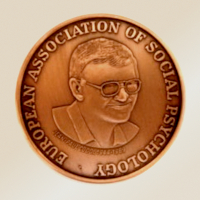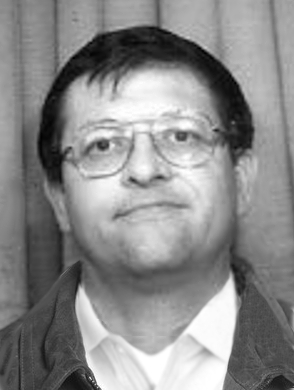Jean-Paul Codol Medal
Information about previous awards
In memory of the substantial contribution of Jean-Paul Codol to the EASP, three Codol Medals recognize outstanding service to the Association. The Codol Medal is awarded to a member (or group) that has significantly advanced the cause of social psychology in Europe by means of their service to the field (i.e. a non-research contribution such as advancing the standing and prominence of social psychology in one or more member countries).
Contributions to the development of European social psychology as a whole as well as building bridges between social psychologists from one particular region to those of another, or advancing the field in novel academic contexts all qualify as service to the field. The recipients will be chosen by the Executive Committee in the Autumn preceding the General Meeting and will receive a certificate and a bronze medal. The registration fees of the awardees for the General Meeting are paid for by the Association. Although there is no open call for applications for this award, suggestions from EASP members are welcome and will be considered by the EC.
Past Award Winners
- 2017: Naomi Ellemers, Miguel Moya, Vincent Yzerbyt
- 2014: The European Review of Social Psychology (Miles Hewstone & Wolfgang Stroebe), Susan Fiske, János László
- 2011: Amélie Mummendey, Eddy Van Avermaet, Jorge Vala
- 2008:Luciano Arcuri, David Hamilton, Maria Lewicka
- 2005: Martin Irle, Jef Nuttin, The Kurt Lewin Institute
Jean-Paul Codol (1944-1989)
by J.-Ph. Leyens, Université Catholique de Louvain and
Codol started his undergraduate studies in sociology but, owing to the influence of Claude Flament, he completed them in social psychology. It is also under the supervision of Claude Flament, and in a laboratory visited by people like Tajfel, Burnstein, Lanzetta, and Bruner, that he wrote his "third cycle thesis". It dealt with the Aix' conceptualization of social representations. Immediately afterwards, and at a time when State Doctorates ("Doctorat d'Etat") were most often perceived as the ultimate end product of a lifelong career, Jean-Paul Codol already started work on his famous thesis: "Similar and different. Searches over the quest for social similarity and differentiation". In recognition of the superior quality of his work he was promoted to Research Director at the Centre National de la Recherche Scientifique (CNRS) and he was asked to head the department of cognitive (and social) psychology at the University of Aix-en-Provence. Unfortunately, the thesis itself remained unpublished, but see Codol (1982).
Let us speak first about Codol's main research. The point of departure of his reasoning was as follows: "How can a person remain a loyal (conformist) member of a group and still claim at the same time his or her specific individuality?" Codol's insightful answer to this question resided in the concept of 'superior conformity of the self to the group': The self claims to respect the group norms better than the average member. The results of 20 experiments illustrating the workings of this principle were published in the European Journal of Social Psychology (1975) and ever since its publication the article has become a classic reading. Having established this P.I.P. (Primus inter Pares) effect, Codol then began to inquire into its nature. Rather than asking his participants to render merely categorical judgments (e.g. 'Am I a better or an equally good member'), he had them now rate their similarity to and their difference from others. For methodological reasons, he also turned the question around, asking his research participants to what extent others were similar to and different from the self. Surprisingly at first, the results did not fit a Euclidean space model, because others were rated as more similar to the self than the self was rated similar to others. Also, the self was viewed as more different from others than others were perceived different from the self. This was the start of his research on the "egocentric point of reference". Interestingly, at about that time comparable findings were being reported in the U.S.A. by Holyoak and Gordon (1983). Pursuing these observations, Codol then asked the key question: "What is so special about the self as a reference point?" Is the self perhaps a prototype, to the same extent that China is a prototype for North Korea, because North Korea resembles China more than the other way around? The phrasing of the question already betrays the influence of Tversky and Kahneman. Unfortunately, because of Jean-Paul's untimely death, we will never know his own final answer. In any case, Codol was always ahead or at the cutting edge in (cognitive) social psychology. He really was a Primus inter Pares.
Codol's work influenced researchers all over the world (even though some did not refer to the PIP effect, but labeled it the "Better-than-Average"-phenomenon). Amongst those influenced by his work a special mentioning should be made of Maria Jarymowicz and her team at the University of Warsaw, who collaborated closely with Jean-Paul.
How is this original work related to Codol's activities in the European Association of Experimental Social Psychology? Although Jean-Paul Codol was never as happy as when playing with his data alone, in the solitude of his office, he was very conscious that data needed to be made public. Among his colleagues, he insisted that data needed to be published in peer-reviewed journals, and that they should be presented to potential critics in congresses. With this aim in mind Codol joined the EASP in the early 70's. With his intelligence and joviality, he was rapidly elected in the Executive Committee. In 1981, ten years after his participation as a student in the second European Summer-School of the Association in Constanz, he organized and staffed the fourth Summer-School at La Baume, in Aix-en-Provence. In addition, he became one of the editors of the famous European Textbook of Social Psychology. Jean-Paul Codol studied "egocentricity", but he was himself not egocentric at all. He took on responsibilities not towards self-enhancement, but towards the promotion of Southern, and especially, French-speaking experimental social psychology.
Although he was not quite fluent in English (he also kept reminding people that French was one of the official languages of the Association), Jean-Paul Codol was conscious that good research had to be international. This call was especially relevant for those circles where regionalism and protectionism were strong, and where one used to speak of the "le génie de la langue". It should be noted, for example, that the 1981 Summer-School comprised groups run only in French or in English. In no way however did this "specialization" hurt the social and intellectual success of the school. To the contrary, this experience lent support to Hewstone and Brown's posterior model of Harmonious Relations between Distinct Groups.
Also in line with his desire to draw underrepresented national groups under the international and stimulating umbrella of EASP, Codol was keen on developing good relationships with the increasing numbers of social psychologists from Southern Europe. To this end he participated in numerous informal encounters, he was partially responsible for a Summer-School in Portugal devoted to research methods, and he was involved in the first (and only ever) colloquium of experimental social psychology for Roman-languages researchers. It should be noted that all these activities were organized with the moral and financial support of EASP, even though some members of the Executive Committee were fearful of a North-South secession. Such an apprehension was totally out of order however, because, on each of the above mentioned occasions, Jean-Paul Codol managed to convince his audience that strength required international unity.
Jean-Paul Codol lived with his wife and three boys outside of Aix, in a house surrounded by a magnificent and huge property. It was almost the country and one could compare Codol to a farmer. When he planted seeds, he was already looking forward to goals for the next ten years. Patiently and endlessly, he would watch the growings of his crops. And he would stimulate - and sometimes rush - the people around him to act the way he did and to also dream his dreams.
Truly, Jean-Paul Codol was a model visionary, a model father and a model EASP-member.
References
- Codol, J. P. (1982). Differentiating and non-differentiating behavior. In Codol, J. P. & J. Ph. Leyens (Eds.), The cognitive analysis of social behavior. The Hague: Martinus Nijhoff.
- Codol, J. P. (1975). On the so-called superior conformity of the self behavior: Twenty experimental investigations. European Journal of Social Psychology, 5, 457-501.

